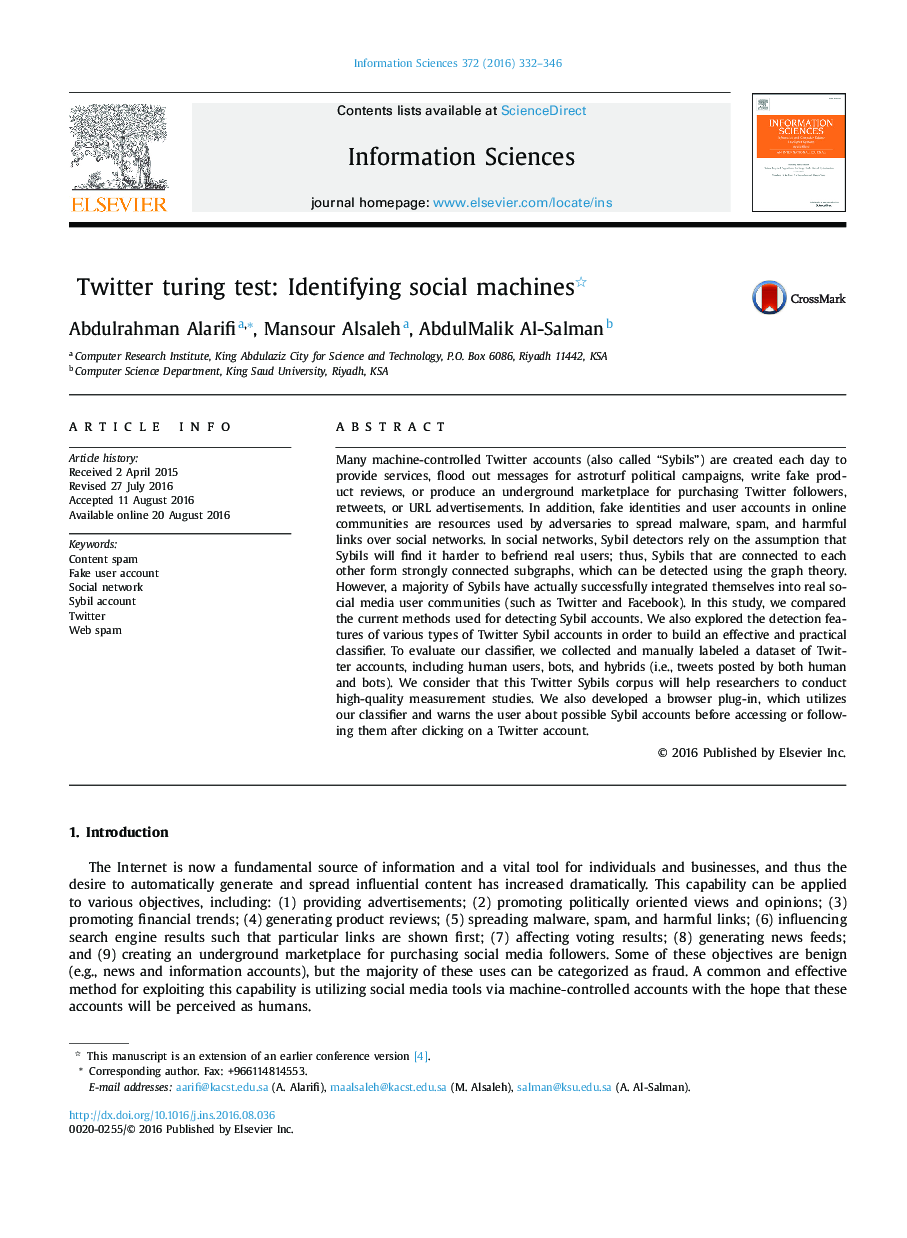| Article ID | Journal | Published Year | Pages | File Type |
|---|---|---|---|---|
| 4944771 | Information Sciences | 2016 | 15 Pages |
Abstract
Many machine-controlled Twitter accounts (also called “Sybils”) are created each day to provide services, flood out messages for astroturf political campaigns, write fake product reviews, or produce an underground marketplace for purchasing Twitter followers, retweets, or URL advertisements. In addition, fake identities and user accounts in online communities are resources used by adversaries to spread malware, spam, and harmful links over social networks. In social networks, Sybil detectors rely on the assumption that Sybils will find it harder to befriend real users; thus, Sybils that are connected to each other form strongly connected subgraphs, which can be detected using the graph theory. However, a majority of Sybils have actually successfully integrated themselves into real social media user communities (such as Twitter and Facebook). In this study, we compared the current methods used for detecting Sybil accounts. We also explored the detection features of various types of Twitter Sybil accounts in order to build an effective and practical classifier. To evaluate our classifier, we collected and manually labeled a dataset of Twitter accounts, including human users, bots, and hybrids (i.e., tweets posted by both human and bots). We consider that this Twitter Sybils corpus will help researchers to conduct high-quality measurement studies. We also developed a browser plug-in, which utilizes our classifier and warns the user about possible Sybil accounts before accessing or following them after clicking on a Twitter account.
Keywords
Related Topics
Physical Sciences and Engineering
Computer Science
Artificial Intelligence
Authors
Abdulrahman Alarifi, Mansour Alsaleh, AbdulMalik Al-Salman,
